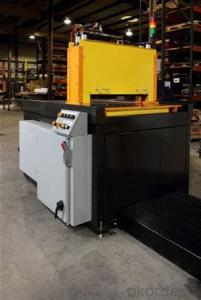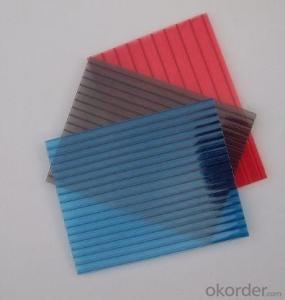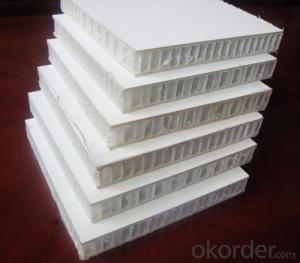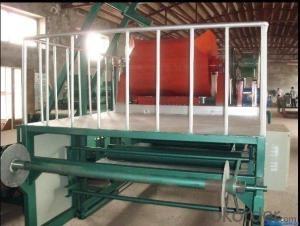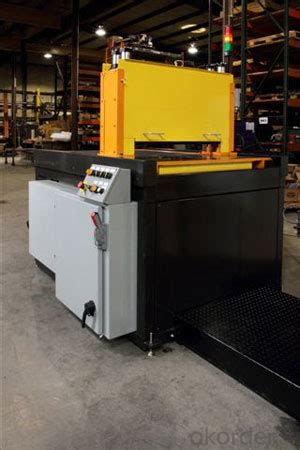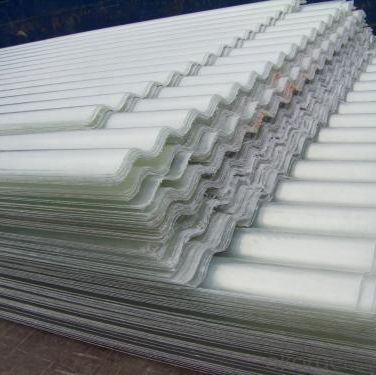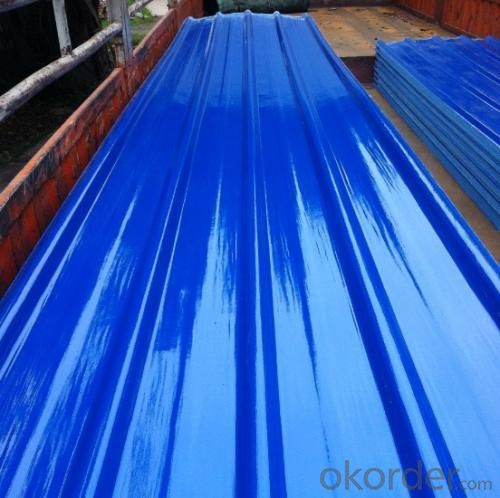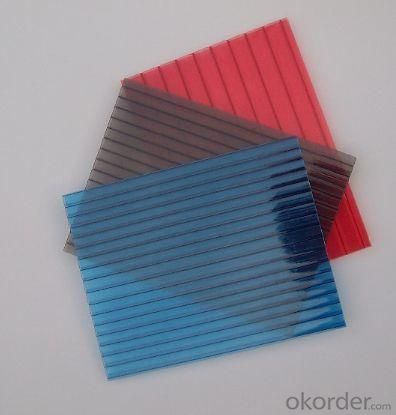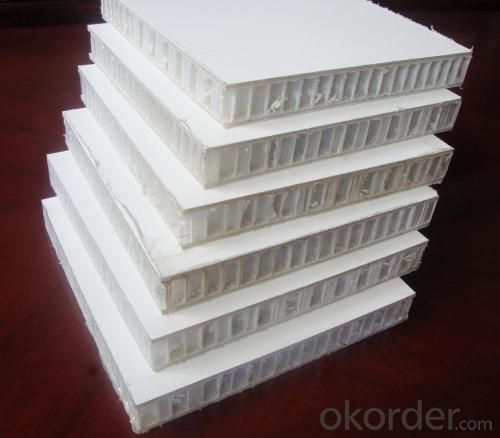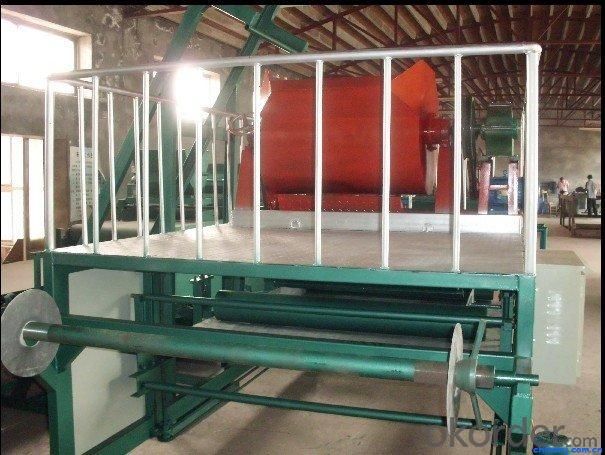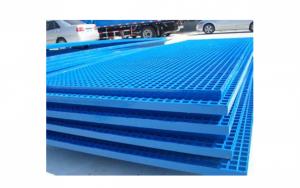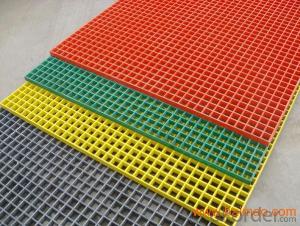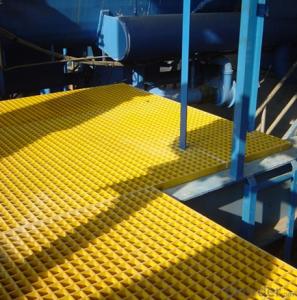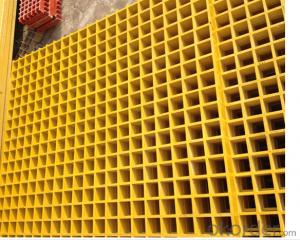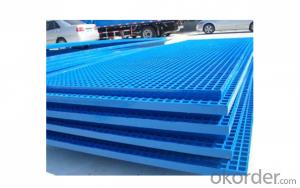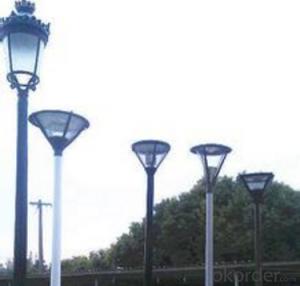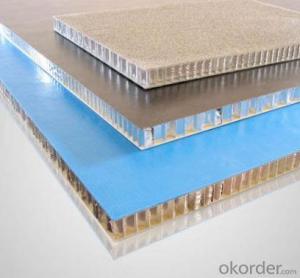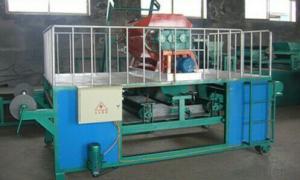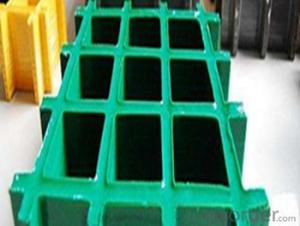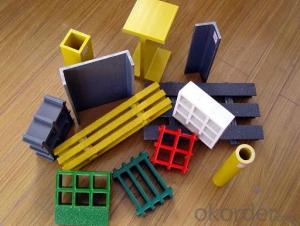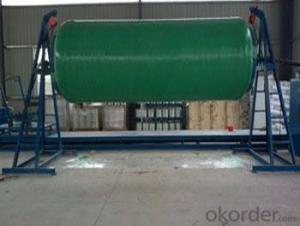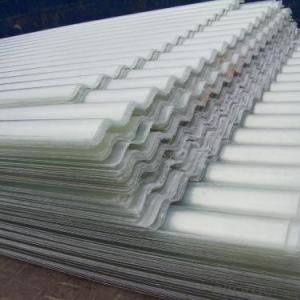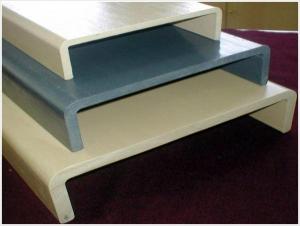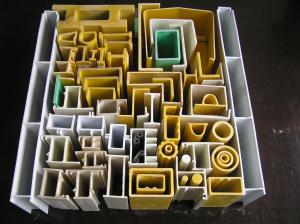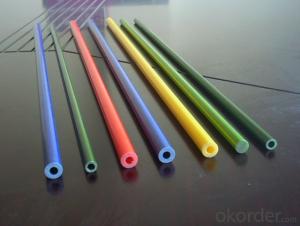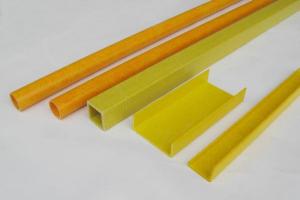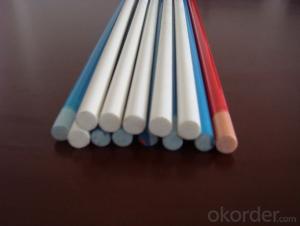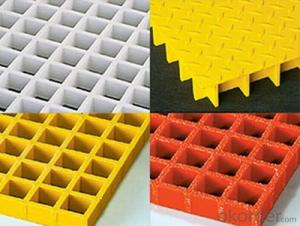FRP Pultrusion Profiles:Anti-Corrosion, Anti-Rust, High-Quality FRP Pultruded Grating in Various Styles
- Loading Port:
- Tianjin
- Payment Terms:
- TT OR LC
- Min Order Qty:
- 1 m.t.
- Supply Capability:
- 300000 m.t./month
OKorder Service Pledge
OKorder Financial Service
You Might Also Like
PRODUCT DESCRIPTION
Pultruded grating is made by a particular assembly process, which using “I” shape as its main load-bearing and special rod to go through the bearing bar. Pultruded grating include the standard grating and the custom grating, the custom grating can be designed to meet customer’s requirement or special using condition by changing the shape, size and space of the bearing bars, the surface can be covered with lozenge panel, grit panel, or added the anti-slippery sand directly.
FRP pultruded grating has the most characteristics of molded grating, but it has its distinct advantages, it has very high fiberglass content in the loading direction, so it has very high load capability, it has more superiority when used at wide span, so that the basic support will be decreased and the project cost will be reduced accordingly.
SPECIFICATION
The standard space between two crossbars is 6 inch or 12 inch.
Thickness (mm) | Bar width (mm) | Open space (mm) | Open rate (%) | Approx weight (kg/m |
25.4 | 15.2 | 22.8 | 60 | 13.2 |
25.4 | 15.2 | 15.2 | 50 | 15.9 |
25.4 | 15.2 | 10.1 | 40 | 18.5 |
25.4 | 40 | 10.8 | 21 | 14.5 |
38.1 | 15.2 | 22.8 | 60 | 15.8 |
38.1 | 15.2 | 15.2 | 50 | 19.1 |
38.1 | 15.2 | 10.1 | 40 | 22.4 |
50.8 | 25.4 | 25.4 | 50 | 16.6 |
50.8 | 25.4 | 12.7 | 33 | 21.1 |
CHOICE FOR PULTRUDED GRATING
Resin: GP resin, ISO resin, VE resin, Phenol resin
Color choice: Yellow, gray, green, custom color
Surface choice: Groove surface, grit surface, lozenge cover surface
FEATURES
a. Anti-corrosion and anti-rust
b. Light weight and high strength
c. Anti-flammable
d. Anti- fatigue
e. Safe and anti-slippery
f. Anti-ageing
g. Easy of maintenance
h. Excellent electromagnetism property
i. Good economic benefit
FIELDS SERVED
Sewage treatment,
water supply and drainage,
chemical industry,
oil industry,
power engineering,
pulp and paper,
construction engineering,
spinning, marine engineering.
APPLICATION
Operation terrace,
stair walkway,
ground floor,
trench cover,
sidewalk,
foot bridge,
equipment safety fence,
scaffold.
COMPANT DESCRIPTION
CNBM,China National Building Materials Group is a state-owned enterprise in charge of administrative affairs in china building materials industry. Established in 1984, CNBM is a large group corporation of building materials with total assets of 25 billion RMB and a total staff of 30,000.CNBM now owns 200 subordinating firms of solely owned and joint-venture companies.
CNBM International Corporation is one subsidiary of CNBM, we focus on offering good-quality products,professional service and complete solution to our customers. Strong delivery capacity, advanced technology& management, strong financing capability and excellent after-sale service are our advantages in sharing international market.
FAQ
Q1.What's your sample policy?
A:We can supply the sample if we have ready parts in stock, but the customers have to pay the courier cost.
Q2.Can you produce according to the samples?
A: Yes, we can produce or modify the products according to your request.
Q3.How do you deliver the goods to my country?
A:We can provide international express, such as DHL, EMS, UPS, FedEx, etc. We select air freight and sea freight upon your requests. Quotations if without mentioning the shipping costs are shipping fee excluded.
Q4.How much does it cost to ship to my country?
A:When you goanna to place an order, please contact us, because different country has different freight.
Q5.How to get the catalogue?
A:please contact us and tell us what you are looking for.
We will try our best to meet customers' demands. Welcome you come here to visit us. We sincerely welcome partners around the world to establish business cooperation with us on the basis of mutual trust, benefit and development.
PICTURES
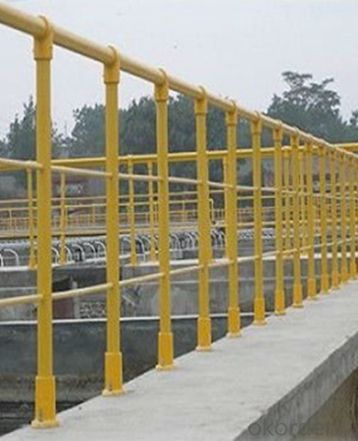
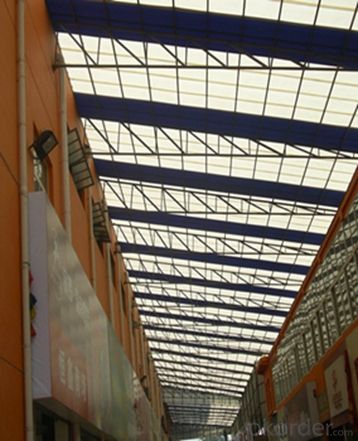

- Q: What are the typical applications of FRP pultrusion profiles?
- FRP (Fiber Reinforced Polymer) pultrusion profiles have a wide range of applications due to their unique properties. Some of the typical applications of FRP pultrusion profiles include: 1. Construction and Infrastructure: FRP profiles are used for various structural elements in buildings, bridges, and other infrastructure projects. They are commonly used for beams, columns, decks, and reinforcement due to their high strength-to-weight ratio, corrosion resistance, and durability. 2. Industrial and Chemical Processing: FRP profiles are extensively used in the industrial sector for applications such as platforms, walkways, ladders, and handrails. They offer excellent resistance to chemicals, heat, and corrosion, making them suitable for harsh environments. 3. Electrical and Telecommunication: FRP profiles are utilized for cable trays, ladder racks, and support structures in electrical and telecommunication systems. They provide electrical insulation and are non-conductive, ensuring safety and reliability in these applications. 4. Transportation: FRP profiles find applications in the transportation industry, particularly in the manufacturing of lightweight components for vehicles, including buses, trains, and trucks. They help reduce weight, improve fuel efficiency, and enhance the overall performance of these vehicles. 5. Marine and Offshore: FRP pultrusion profiles are well-suited for marine and offshore applications due to their resistance to saltwater, UV radiation, and harsh environmental conditions. They are used for boat hulls, piers, dock fenders, and other offshore structures. 6. Recreation and Sports: FRP profiles are employed in the production of various recreational equipment such as ladders, slides, playground equipment, and sports accessories. Their high strength, durability, and resistance to weather elements make them ideal for these applications. 7. Water Treatment and Wastewater Management: FRP profiles are widely used in water treatment plants, sewage systems, and wastewater management facilities. They are used for grating, handrails, ladders, and other structural components due to their resistance to chemicals and corrosion. Overall, the versatility, strength, corrosion resistance, and lightweight nature of FRP pultrusion profiles make them suitable for a diverse range of applications in different industries.
- Q: What are the different types of FRP pultrusion profiles available?
- Some of the different types of FRP pultrusion profiles available include standard shapes such as I-beams, channels, angles, and tubes. Additionally, there are custom profiles that can be designed and manufactured based on specific project requirements.
- Q: What are the different shapes and sizes of FRP pultrusion profiles available?
- FRP pultrusion profiles are available in a wide range of shapes and sizes. Some common shapes include I-beams, square tubes, round tubes, angles, channels, flat bars, and rods. These profiles can vary in size, with dimensions ranging from small cross-sections to larger and more robust profiles. The availability of different shapes and sizes allows for versatility in various applications, catering to different structural requirements and design needs.
- Q: How do FRP pultrusion profiles handle torsion loads?
- FRP pultrusion profiles are renowned for their exceptional mechanical properties and impressive strength-to-weight ratio, making them an optimal selection for managing torsion loads. When exposed to torsion, these profiles are engineered to endure twisting forces and sustain their structural integrity. The construction of these profiles is pivotal to their capacity for handling torsion loads. FRP pultrusion profiles are crafted by pulling reinforcing fibers, such as fiberglass, through a bath of resin and subsequently through a heated die. This process aligns the fibers in the direction of the load, resulting in remarkable strength and rigidity. In the case of torsion loads, the aligned fibers within the profile's cross-section resist the twisting force by distributing it along the profile's length. This distribution of force aids in averting localized stress concentrations, thereby diminishing the risk of deformation or failure. Furthermore, the resin matrix encompassing the fibers acts as a binding agent, securing the fibers together and providing defense against environmental elements such as moisture, chemicals, and UV radiation. This ensures the profile's long-term durability and stability when subjected to torsion loads. Moreover, FRP pultrusion profiles can be tailored with specific cross-sectional shapes and dimensions to enhance their torsional strength. By optimizing the geometric configuration, such as augmenting the wall thickness or adding reinforcing ribs, the profiles can be further reinforced to meet the desired requirements for torsion loads. All in all, FRP pultrusion profiles excel in managing torsion loads due to their inherent properties, manufacturing process, and design adaptability. Their ability to withstand twisting forces, combined with their lightweight nature, establishes them as a dependable and cost-efficient choice for diverse applications, including construction, infrastructure, aerospace, and automotive industries.
- Q: Are FRP pultrusion profiles resistant to termites or other pests?
- Yes, FRP (Fiber Reinforced Polymer) pultrusion profiles are highly resistant to termites and other pests. The composition of FRP, which includes resin and glass fibers, makes it an inhospitable material for pests. Unlike wood, FRP does not provide a food source or favorable conditions for termites or other pests to thrive. Therefore, FRP pultrusion profiles are an excellent choice for applications where resistance to pests is required.
- Q: Are FRP pultrusion profiles resistant to moisture absorption?
- Yes, FRP pultrusion profiles are highly resistant to moisture absorption. The inherent properties of the fiberglass and resin used in pultrusion manufacturing make the profiles highly durable and impervious to moisture, ensuring long-term performance and minimal structural damage.
- Q: How do FRP pultrusion profiles perform in high-traffic areas?
- FRP pultrusion profiles perform exceptionally well in high-traffic areas. Due to their inherent strength, durability, and resistance to corrosion, these profiles can withstand heavy loads, constant foot traffic, and various environmental conditions without compromising their structural integrity. Additionally, FRP pultrusion profiles offer excellent electrical insulation properties, making them safe and reliable for use in areas with high human activity.
- Q: Are FRP pultrusion profiles resistant to chemicals used in mining operations?
- FRP pultrusion profiles, commonly referred to as Fiber Reinforced Polymer, generally exhibit resistance to chemicals commonly used in mining operations. These profiles are well-known for their exceptional chemical resistance properties, making them suitable for a variety of corrosive environments, including mining operations. To provide resistance against the vast array of chemicals typically found in mining applications, such as acids, alkalis, solvents, and corrosive gases, the resin matrix used in FRP pultrusion profiles can be carefully selected. Additionally, the reinforcement fibers, often composed of glass or carbon, further enhance the overall chemical resistance of the profile. Moreover, FRP pultrusion profiles are non-conductive, making them an ideal choice for both electrical and mining applications. They are not susceptible to corrosion or degradation when exposed to chemicals, ensuring their durability and longevity in harsh mining environments. However, it is crucial to consider the specific chemicals and concentrations used in mining operations. Although FRP pultrusion profiles generally possess excellent chemical resistance, prolonged exposure to highly aggressive chemicals or high concentrations may necessitate additional measures. These measures could include selecting specific resin systems or applying surface coatings to ensure optimal performance and longevity. To determine the most suitable materials for specific mining chemical environments, it is advisable to consult with FRP manufacturers or experts.
- Q: Can FRP pultrusion profiles be used in oil and gas applications?
- Yes, FRP (Fiber Reinforced Plastic) pultrusion profiles can be used in oil and gas applications. FRP materials have excellent corrosion resistance, high strength-to-weight ratio, and low maintenance requirements, making them suitable for various demanding environments, including oil and gas. Additionally, FRP pultrusion profiles can be customized to meet specific requirements, such as resistance to chemicals, high temperatures, and fire.
- Q: Can FRP pultrusion profiles be used in the construction of offshore platforms?
- Yes, FRP (Fiber Reinforced Polymer) pultrusion profiles can be used in the construction of offshore platforms. FRP pultrusion profiles have several advantageous properties that make them suitable for offshore applications. Firstly, FRP pultrusion profiles are lightweight yet strong, which is crucial for offshore platforms that need to withstand harsh environmental conditions such as strong winds, waves, and corrosive saltwater. The high strength-to-weight ratio of FRP makes it an ideal choice for reducing overall weight while maintaining structural integrity. Secondly, FRP is highly resistant to corrosion, unlike traditional construction materials such as steel. This is particularly important in the offshore environment, where saltwater exposure can lead to rapid corrosion of metal structures. FRP pultrusion profiles do not rust or corrode, resulting in longer service life and reduced maintenance costs. Furthermore, FRP pultrusion profiles can be designed and manufactured to have excellent fire resistance properties. This is crucial for offshore platforms, as fire incidents can have catastrophic consequences. FRP materials can be engineered to meet specific fire safety standards, providing an added layer of protection. Additionally, FRP pultrusion profiles offer design flexibility, as they can be easily customized to meet specific project requirements. This allows for the creation of complex shapes and sizes, enabling efficient construction and installation of offshore platforms. Overall, the lightweight, corrosion-resistant, fire-resistant, and customizable nature of FRP pultrusion profiles make them a suitable choice for the construction of offshore platforms. They offer numerous advantages over traditional materials, contributing to improved safety, durability, and cost-effectiveness in offshore construction projects.
Send your message to us
FRP Pultrusion Profiles:Anti-Corrosion, Anti-Rust, High-Quality FRP Pultruded Grating in Various Styles
- Loading Port:
- Tianjin
- Payment Terms:
- TT OR LC
- Min Order Qty:
- 1 m.t.
- Supply Capability:
- 300000 m.t./month
OKorder Service Pledge
OKorder Financial Service
Similar products
Hot products
Hot Searches
Related keywords
